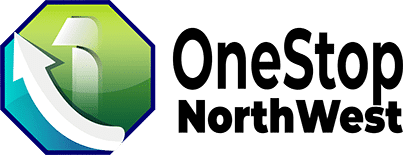
Introduction
In business, being visible online is not just an option; it’s a crucial part of survival. This is where SEO (Search Engine Optimization) comes into play. If you’re a small business owner diving into the digital world, mastering the essentials of SEO can seem like trying to catch fog. But don’t worry, it’s simpler than it looks at first glance.
SEO is essentially the art and science of making your website friendly to search engines like Google and Bing. Why is this important? Because the higher your site appears in search results, the more likely people are to find you. Think of SEO as putting up the biggest, brightest sign on the busiest highway in town.
At its core, the aim of SEO is to increase your site’s visibility in search engines. This means when someone searches for a product or service you offer, your website shows up as high as possible in the search results. It’s about understanding what people are looking for online, the words they’re using, and the type of content they wish to consume. Catering to these aspects can drive the right kind of traffic to your website, traffic that can convert into loyal customers.

To succeed in SEO, you need to keep a pulse on both the technical and creative elements required to improve rankings, drive traffic, and increase awareness in search engines. From the words on your webpage to the way other sites link to you on the web, SEO is a complex but manageable task that can yield remarkable results for your business.
Let’s unravel the essentials of SEO management for your website, ensuring your business not only gets found but also thrives in the digital landscape.
Understanding SEO in Website Management
SEO, or Search Engine Optimization, is like a bridge connecting your website to potential customers using search engines like Google, Bing, and Microsoft. Imagine the internet as a vast library, and SEO is the system that helps the librarian (search engines) find the exact book (your website) that a reader (potential customer) is looking for.
Why does this matter? Well, being visible on search engines can significantly impact your business. It’s the difference between being found by someone looking exactly for what you offer or remaining invisible in the vast sea of the internet.
Search Engines: Google, Bing, Microsoft
-
Google: The giant of the internet, holding the largest market share. When people talk about optimizing for search engines, they often mean Google. It uses complex algorithms to deliver the most relevant results to its users.
-
Bing: Microsoft’s search engine, Bing, is Google’s closest competitor. While it has a smaller market share, it powers Yahoo’s search engine, making its reach significant. Optimization for Bing can lead to visibility across multiple platforms.
-
Microsoft: Beyond Bing, Microsoft also offers various tools and platforms, such as LinkedIn and Microsoft Advertising, that can play a role in your overall SEO and digital marketing strategy.
The Role of SEO in Website Management
SEO in website management is about making strategic adjustments to your website so that search engines can easily understand what each page is about. This involves a mixture of content creation, keyword optimization, and technical tweaks to ensure your site is accessible and appealing to both search engines and users.
Here are some key points to remember:
-
Content is King: The quality of your content determines how valuable search engines consider your website. It’s not just about stuffing keywords into your articles; it’s about answering the questions your audience is asking.
-
On-Page Optimization: This includes optimizing your titles, descriptions, and content with relevant keywords. It’s about making sure that when search engines crawl your site, they find a treasure trove of relevant and valuable information.
-
Technical SEO: Ensures that your website is structured in a way that search engines can easily navigate. This includes fast loading times, mobile-friendliness, and secure connections (HTTPS).
-
Off-Page Factors: Your website’s reputation matters. Search engines consider how many reputable sites link back to you. This is seen as a vote of confidence in your content’s quality.
Understanding SEO in website management is crucial for any business looking to enhance its online presence. It’s not just about getting traffic to your site; it’s about attracting the right kind of traffic—people genuinely interested in what you have to offer. By focusing on SEO, you’re not just playing by the rules of Google, Bing, and Microsoft; you’re creating a better experience for your users, which is the ultimate goal of any successful website.
Remember that SEO is not a one-time task but a continuous process of improvement and adaptation to the changing landscapes of the internet and search engine algorithms. With the right strategy, tools, and understanding, SEO can become one of your most powerful tools in website management and digital marketing.
Let’s now delve into the key components of an effective SEO strategy, ensuring your website is not just found but also appreciated and valued by both search engines and users.
Key Components of Effective SEO Strategy
When it comes to mastering website SEO management, understanding the key components of an effective SEO strategy is crucial. These components work together to boost your website’s visibility in search engines, making it easier for your target audience to find you. Let’s break down these components into simple, actionable parts.
User-Focused Content
At the heart of SEO is content. But not just any content—your content must be user-focused. This means:
- Creating content that answers your audience’s questions. Think about what your audience is searching for and how you can provide the best answer.
- Making content engaging. Use stories, case studies, or interesting facts to keep readers hooked.
- Updating regularly. Fresh content keeps users coming back and tells search engines your site is active.

On-Page SEO
On-Page SEO involves optimizing individual web pages to rank higher in search engines. Key aspects include:
- Keywords: Use relevant keywords in your content, including titles, headers, and throughout the text.
- Metadata: This includes title tags and meta descriptions that show up in search results. Make them clear and enticing.
- Internal Linking: Link to other pages on your site to help users discover more content and help search engines understand your site structure.
Off-Page SEO
This is about building your site’s reputation and authority through activities outside your website, such as:
- Backlinks: Getting other reputable websites to link to your content boosts your site’s trustworthiness in the eyes of search engines.
- Social Media Shares: Shares on social media can increase your content’s visibility and bring more traffic to your site.
- Influencer Outreach: Collaborate with influencers to reach a wider audience and gain credibility.
Technical SEO
The backbone of your website—technical SEO ensures your site is loved by both users and search engines by focusing on:
- Site Speed: Fast-loading pages improve user experience and can help your rankings.
- Mobile Friendliness: With more users on mobile devices, your site must perform well on all screen sizes.
- Secure and Accessible Websites: Use HTTPS and ensure your site is accessible to search engines for better rankings.

Local SEO
For businesses serving specific geographic areas, local SEO can’t be ignored. It includes:
- Google My Business: A well-optimized profile can improve your visibility in local search results.
- Local Keywords: Include location-based keywords in your content.
- Local Backlinks: Links from local businesses and organizations strengthen your local presence.
By focusing on these key components, you’re not just optimizing for search engines; you’re creating a better experience for your users. This holistic approach to website SEO management ensures that your site not only ranks well but also meets the needs of your visitors, leading to higher engagement and conversion rates.
Remember that SEO is not a one-time task but a continuous process of improvement and adaptation to new trends and algorithm updates.
Conducting Keyword Research for Your Website
Keyword research is like finding the right keys to unlock the door to the top of search results. It’s a crucial step in website SEO management. Let’s dive into how to do it effectively.
Google Keyword Planner
Start with Google Keyword Planner. It’s a free tool that shows you what people are searching for. You type in words related to your business, and it tells you how many people are looking for those words. It also suggests other related keywords. This tool is great because it gives you data straight from Google.
SEMrush
Next, check out SEMrush. It’s like a spy tool. You can see what keywords your competitors are using and how well those keywords are working for them. SEMrush helps you find opportunities where you can do better than your competitors. It’s not free, but the investment can pay off by giving you insights you wouldn’t get elsewhere.
Ahrefs
Ahrefs is another tool that helps you dig deep into keyword research. It’s similar to SEMrush but has its own unique features. For example, Ahrefs can show you which keywords bring traffic to your competitors’ sites. This tool also helps you find “content gaps” – topics your competitors haven’t covered yet. Ahrefs is a paid tool, but it’s worth it for serious website SEO management.
Long-tail Keywords
Don’t forget about long-tail keywords. These are longer, more specific phrases people search for. They might not get as many searches as shorter keywords, but they’re less competitive and more targeted. For example, instead of “shoes,” go for “women’s running shoes for flat feet.” You have a better chance of ranking high for these and attracting visitors who are looking for exactly what you offer.
Keyword Competitiveness
Finally, consider keyword competitiveness. It’s not just about finding popular keywords. It’s about finding keywords you can realistically rank for. Some keywords are so competitive that it’s tough to get to the top, especially for a new site. Tools like SEMrush and Ahrefs can show you how hard it would be to rank for each keyword.
Keyword research is about understanding what your potential customers are searching for and how you can stand out in those search results. It’s a fundamental part of website SEO management that sets the foundation for your strategy.
Keep in mind that the keywords you choose will influence every part of your SEO strategy, from the content you create to the way you optimize your website’s technical setup.
On-Page SEO Essentials
When we talk about the heart of website SEO management, we’re diving deep into On-Page SEO. This is where your chosen keywords start to work their magic, but it’s also where quality and structure play a pivotal role. Let’s break it down into digestible chunks:
Content Quality
“Content is King” might sound cliché, but it’s the golden rule of SEO. High-quality content is what attracts visitors to your site and keeps them there. But what makes content “high-quality”? It’s content that is:
– Relevant to your audience’s needs and interests.
– Informative and provides value, whether that’s answering a question or solving a problem.
– Engaging enough to hold your audience’s attention.
Google loves content that users find helpful. If people spend time on your site, share your content, or interact with it, Google takes notice.
Metadata
Think of metadata as the behind-the-scenes data that tells search engines what your webpage is about. This includes:
– Title Tags: The title of your page that appears in search results. It should be catchy and include your main keyword.
– Meta Descriptions: The brief description under your title in search results. Although it doesn’t directly impact your ranking, a compelling description can improve click-through rates.
Both are crucial in making a strong first impression in search results.
Internal Linking
Linking to other pages on your site does two things:
1. It helps search engines understand the structure of your site and what content you consider important.
2. It keeps visitors on your site longer by encouraging them to explore more pages.
Use internal links wisely to guide both users and search engines through your site’s content.
Image Optimization
Images make your content more engaging, but they can also slow down your site if they’re not optimized. Here’s how to keep them in check:
– Compress images to reduce file size without losing quality.
– Use descriptive filenames and alt text with keywords to help search engines understand what the image is about.
This not only helps with SEO but also improves accessibility for users with visual impairments.
URL Structure
The structure of your URLs can impact your SEO. A good URL is:
– Short and simple
– Descriptive and includes keywords
– Easy to read for both humans and search engines
A well-structured URL gives a clear hint about the content of the page, making it easier for search engines to crawl and index your site.
By focusing on these on-page SEO essentials, you’re laying a solid foundation for your website’s visibility in search results. It’s a mix of art and science—creating content that resonates with your audience while also satisfying search engine algorithms.
Remember that SEO is a marathon, not a sprint. Each element of on-page SEO plays a role in the bigger picture of website seo management, contributing to the ultimate goal of driving more traffic and engagement to your site.
Off-Page SEO Tactics
In the realm of website SEO management, off-page SEO is like the wind beneath your website’s wings. It’s everything you do outside of your website to signal search engines that your site is trustworthy, relevant, and deserves a top spot in search results. Let’s dive into the key tactics: Backlinks, Social Media Shares, Brand Mentions, Guest Posting, and Influencer Outreach.
Backlinks: The Trust Signals
Imagine backlinks as votes of confidence from one site to another. Each quality backlink tells search engines, “Hey, this content is valuable.” But, not all votes are equal. A link from a highly reputable site has more weight than a dozen from lesser-known sites. It’s not just about quantity; the quality of backlinks can significantly boost your site’s authority and rankings.
Social Media Shares: Spreading the Word
While social media doesn’t directly influence rankings, it’s a powerful tool for amplifying your content’s reach and generating indirect SEO benefits. When people share your content on social media, it increases visibility, drives traffic, and can lead to more backlinks. It’s a cycle of positive reinforcement: more shares lead to more views, which can lead to more links, and so on.
Brand Mentions: Building Authority
Even without a direct link, mentions of your brand across the web can enhance your SEO profile. Search engines view these mentions as indicators of brand authority and credibility. The more your brand is talked about, the more likely search engines will deem your content as authoritative, positively impacting your rankings.
Guest Posting: Sharing Expertise
Guest posting on reputable sites within your industry is a dual-purpose tactic. It not only gets your brand in front of a new audience but also earns you valuable backlinks. By sharing your expertise on other platforms, you establish authority in your field, drive targeted traffic back to your site, and improve your backlink profile.
Influencer Outreach: Leveraging Credibility
Connecting with influencers to promote your content can amplify your reach exponentially. When influencers with a large and engaged following mention your brand or share your content, it not only boosts visibility but can also lead to a surge in traffic and backlinks. Influencer outreach is about leveraging the trust and credibility they’ve built with their audience to benefit your brand.
As we’ve seen, off-page SEO is an essential component of a comprehensive website SEO management strategy. It’s about building the authority and trustworthiness of your site in the eyes of search engines through various external efforts. By focusing on quality backlinks, leveraging social media, ensuring your brand is mentioned across the web, guest posting strategically, and engaging with influencers, you can significantly improve your site’s SEO performance. Off-page SEO is about making your site’s presence felt far beyond its own pages.
Technical SEO for a Better User Experience
When we dive into the technical side of SEO, we’re looking at the nuts and bolts that make your website tick. It’s not just about having great content; it’s also about ensuring that search engines can find, crawl, and understand your content without any hitches. Let’s break down some of the key areas:
Site Speed
Imagine waiting for a slow-loading page. Frustrating, right? Your visitors think so too. Site speed is crucial because if your site takes too long to load, people will leave before they even see what you have to offer. Google knows this and considers site speed a ranking factor. Tools like Google’s PageSpeed Insights can show you how fast your site loads and give you tips on how to make it faster.
Mobile Friendliness
With more than half of the world’s internet traffic coming from mobile devices, having a mobile-friendly website is no longer optional. It’s a must. Google operates on a mobile-first indexing basis, meaning it looks at the mobile version of your site first when deciding how to rank it. Use Google’s Mobile-Friendly Test tool to see if your site passes the test and learn how to improve it.
XML Sitemaps
Think of an XML sitemap as a roadmap for search engines. It lists all the important pages on your site, making sure Google can find and crawl them all. It’s like handing Google a guidebook to your website. Ensuring you have a current XML sitemap submitted to Google Search Console helps your SEO by making sure all your content has the chance to rank.
Structured Data
Structured data is a bit like speaking directly to search engines in their language. It helps them understand not just what is on your page, but how the information on the page is connected. For example, it can tell search engines that a certain number is a product rating, price, or event date. This clarity can lead to rich snippets in search results, which can improve click-through rates. Schema.org is the go-to resource for implementing this kind of markup.
Security (HTTPS)
Security is a top priority for everyone online, including search engines. Websites that use HTTPS encryption protect their visitors’ data. Google has confirmed that serving your website over HTTPS (instead of HTTP) is a ranking signal. This means that secure sites have a better chance of ranking higher in search results. Plus, browsers warn users when they’re about to visit non-HTTPS websites, which can scare off potential visitors.
By focusing on these technical SEO elements, you’re not just optimizing for search engines; you’re creating a better experience for your visitors. Fast-loading, easy-to-navigate, secure websites are more likely to retain visitors and convert them into customers or followers. Technical SEO is a critical piece of the website SEO management puzzle that works best when integrated with great content and robust off-page SEO strategies.
Leveraging SEO Tools for Enhanced Performance
In website SEO management, having the right tools in your arsenal can make a significant difference. From understanding your website’s current position in search rankings to uncovering opportunities for improvement, SEO tools are indispensable. Let’s dive into some of the most powerful tools available and how they can boost your SEO efforts.
Ahrefs
Ahrefs is like a Swiss Army knife for SEO professionals. It’s particularly renowned for its backlink analysis capabilities. By understanding who’s linking to your site and the quality of these links, you can strategize on how to improve your backlink profile. Ahrefs also offers keyword research, competitor analysis, and content exploration tools, making it easier to pinpoint what works in your industry.
KWFinder
For those looking to uncover long-tail keywords with lower competition, KWFinder is a go-to tool. It’s user-friendly and provides detailed information on keyword difficulty, search volume, and potential traffic. This tool can be particularly helpful for smaller websites aiming to find their niche in crowded markets.
WooRank
WooRank offers a detailed SEO audit of your website, highlighting areas for improvement and providing insights into optimization. From site speed to usability, WooRank covers a broad spectrum of factors affecting your site’s performance. It’s an excellent tool for quickly identifying issues that might be holding your site back from achieving better rankings.
Semrush
Semrush is a comprehensive SEO platform offering a suite of tools designed to improve online visibility and discover marketing insights. Its features include keyword research, site audits, competitor analysis, and more. Semrush’s ability to track your rankings and find opportunities for gaining an edge over your competitors makes it a valuable asset in website SEO management.
BrightLocal
Local SEO is crucial for businesses serving specific geographical areas. BrightLocal is tailored for this purpose, helping you manage local listings, monitor local search rankings, and track online reviews. It’s an essential tool for businesses aiming to dominate local search results and attract more customers from their community.
AnswerThePublic
Understanding what your audience is searching for is key to creating relevant content. AnswerThePublic provides insights into the questions and queries people have around specific topics. This tool can guide your content strategy, ensuring you address the actual needs and interests of your target audience.
Google Search Console
Last but certainly not least, Google Search Console is a must-use tool for anyone serious about SEO. It allows you to monitor your site’s performance in Google search, understand which queries bring users to your site, and identify issues Google has crawling and indexing your pages. It’s a direct line of communication with Google and provides invaluable data for optimizing your website.
By leveraging these SEO tools, you can gain deeper insights into your website’s performance, uncover opportunities for growth, and refine your strategies for better search engine visibility. Effective website SEO management is about continuously learning and adapting to the ever-changing landscape of search engines. With the right tools and a commitment to improvement, you can enhance your website‘s performance and achieve your online visibility goals.
Frequently Asked Questions about Website SEO Management
Navigating SEO can feel like trying to solve a puzzle with ever-changing pieces. But don’t worry! We’ve compiled some of the most common questions about website SEO management to help clear up the confusion. Let’s dive in.
What is SEO and how does it work?
SEO, or Search Engine Optimization, is like a bridge that connects your website to people searching for what you offer. Imagine the internet as a huge library and your website is a book in it. SEO is what helps the librarian (in this case, search engines like Google and Bing) find your book and show it to people looking for information you have.
How does it work? Well, search engines use complex algorithms to scan all the books (websites) in the library. They look for clues like keywords, how fast your pages load, if your site is easy to read on phones, and many other factors. The better your site matches what the search engine thinks people are looking for, the higher it places your book on the shelf, making it easier for people to find.
How can I do SEO for my website?
Doing SEO for your website involves a mix of actions, both big and small, that together can help improve your site’s visibility in search results. Here’s a simple way to start:
- Understand Your Audience: Know what they’re searching for online. This means doing keyword research to find the terms they use.
- Optimize Your Content: Make sure your website’s pages include these keywords in a natural way. Also, ensure your content is valuable and answers your audience’s questions.
- Make Your Site User-Friendly: This includes making it fast, mobile-friendly, and easy to navigate.
- Build Quality Backlinks: Get reputable websites to link back to your content. This shows search engines that your site is trustworthy and authoritative.
- Keep Learning and Updating: SEO isn’t a one-time task. Search engines constantly change how they rank sites, so staying informed and making regular updates is key.
What is the best SEO tool for website?
There isn’t a one-size-fits-all answer to this question, as the best SEO tool for your website depends on your specific needs, budget, and level of expertise. However, here are a few popular tools that many find helpful:
- Google Search Console: A free tool from Google that helps you understand how your site is performing in search and identifies issues to fix.
- Semrush: Offers a wide range of features including keyword research, site audits, and competitor analysis.
- Ahrefs: Great for backlink analysis, keyword research, and monitoring your site’s ranking.
- AnswerThePublic: Useful for finding questions people are asking in search engines related to your keywords.
The best tool is the one that fits your goals and helps you make informed decisions to improve your site’s SEO.
Remember that website SEO management is an ongoing process. It’s about making incremental improvements over time. With patience, persistence, and the right approach, you can build a strong online presence and attract more visitors to your site. Keep exploring, learning, and adapting to stay ahead in the dynamic world of search engine optimization.
Conclusion
We’ve journeyed through the essentials of website SEO management, uncovering the significance of each component in building a robust online presence. From understanding the basics to leveraging advanced tools, the path to SEO success is multifaceted but achievable with the right strategy and dedication.
At OneStop Northwest, we’re committed to simplifying this journey for you. Our expertise in website SEO management is tailored to meet your unique business goals, ensuring your site not only reaches its target audience but also delivers a memorable experience that converts visitors into loyal customers.
SEO isn’t a one-time task; it’s a continuous process of improvement and adaptation. The digital landscape is changing, and so are the strategies to remain visible and relevant in search engines. This is where we step in. Our team stays abreast of the latest trends and algorithm updates to keep your website performing at its peak.

By partnering with us, you’re not just getting SEO services; you’re investing in a partnership that values your business’s growth and online success. Our data-driven approach, combined with a deep understanding of your business needs, allows us to craft bespoke SEO strategies that drive results.
Whether you’re a small business owner or manage a large enterprise, our SEO services are designed to cater to your specific needs and objectives. We believe in transparency, value, and above all, results. Our track record speaks for itself, with numerous clients witnessing significant improvements in their online visibility and traffic.
Embrace the power of effective website SEO management with OneStop Northwest. Let’s navigate the complexities of SEO together, transforming challenges into opportunities for growth.
Ready to elevate your online presence? Contact us now and discover how we can help your business thrive in the digital world.
SEO management is indeed an ongoing journey, but with OneStop Northwest by your side, you’re equipped to tackle the challenges and seize the opportunities that lie ahead. Let’s embark on this journey together, optimizing your website for today and preparing it for the future.





